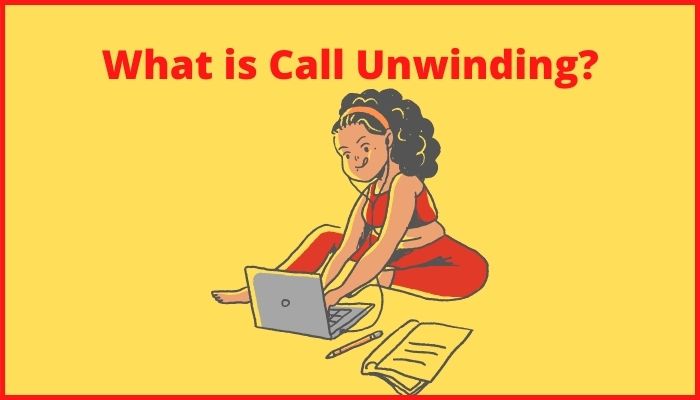The options market, particularly in India, accounts for a considerable portion of the derivatives market. As you might predict, options account for roughly 80% of all derivatives traded, with the rest falling into the futures market. Let’s take a closer look at option trading in India using example & how to learn options trading in india?
Table of Contents
What is Options trading in India?
You might desire to Buy or Sell shares in the futures market at a specified price in the future. There are two forms of options trading in the derivatives markets based on this premise: Call options and Put options.
- Call options are futures contracts that offer the buyer the right but not the obligation to purchase the actual stocks or index.
- Put options, on the other hand, allow you the right to sell something in the future.
Let’s take a look at each of these two options separately.
Call options
A call option is a two-party derivative contract. The call option buyer gains the right (but not the responsibility) to exercise his option to purchase a certain asset from the call option seller for a set period of time.
Put Options
There can never be a buyer without selling in any market. Therefore, you can’t have call options without put options in the options market. Puts are option contracts that allow you the right to sell an underlying stock or index at a defined price on or before a future expiration date.
A put option is the polar opposite of a call option in this regard. They do, however, share some characteristics.
Understanding Call Option
If you expect the price of the index to gain in the coming days, rather than the price of a specific share, you should buy an index call option as a trader. On the NSE, you can buy the CNX Nifty 50, CNX IT, and Bank Nifty, while on the BSE, you can buy the 30-share Sensex.

Options Trading in India with example
Assume the Nifty 50 is now trading at roughly 17,000 points. If you’re positive on the market and think the Nifty will hit 17,100 in the next month, you may buy a one-month Nifty Call option at that price.
Let’s imagine this call is available at a Rs 20 per share premium. Since the existing contract or lot size of the Nifty is 50 units, purchasing 2 lots of call options on the index will cost you Rs 2,000 in total premium.
Scenario 1
You would not want to execute your option and buy at 17,100 levels if the index remained below 17,100 points for the entire month till the contract expires.
You’re also under no obligation to buy it. You might simply disregard the agreement. The only thing you’ve lost is your Rs 2,000 premium.
Scenario 2
If the index does, however, cross 17,100 points as projected, you have the option to buy at that level. You would, of course, want to use your call choice.
So, keep in mind that you won’t start making money until the Nifty hits the 17,130 level, because you’ll have to factor in the cost of paying the premium into the index’s cost.
This is known as the breakeven point, which is the point at which you make no profit and no loss.
Scenario 3
You only begin to recoup your premium cost when the index is around 17,100 and 17,130 points. So, only execute your option at these levels if you don’t expect the index to grow any more or if the contract’s expiration date falls at these levels.
How is the writer (Seller) of this call option fairing?
He gains from the option premium he earned from you as long as the index does not surpass 17,100. He’s losing several of the premium you paid him because the index is between 17,100 and 17,130. His losses are proportional to your gains once the index climbs above 17,130, and both are dependent on how much the index rises.
In a word, for Rs 20 a share, the option writer has taken on the risk of the index rising. In addition, whereas your losses are limited to the premium you pay and your profit potential is limitless, the writer’s earnings are restricted to the premium and his losses are potentially limitless.
Call Option Example for Stocks
Assume RIL’s annual general meeting (AGM) is approaching, and you feel a significant announcement will be made at the event. While the stock is now trading at Rs 1950, you believe that this news will push the price higher, possibly beyond Rs 1950.
You may be able to purchase a Reliance call option at a strike price of 1970 and the call option was quoting Rs. 20, in which case you would pay a premium of Rs 20 per share or Rs 4,000. (Rs 20 x 200 units).
Once the cash market price surpasses Rs 1990 per stock (i.e., your strike price of Rs 1970 + premium paid of Rs 20) you begin to profit.
Scenario 1
You could let the call option decline if the AGM does not produce any remarkable news and the share price remains unchanged at Rs 1950 or falls to Rs 1930 as a result of market disappointment.
In this situation, your maximum loss would be the Rs 20 per share premium you paid, totaling Rs 4,000. Nevertheless, if you had bought the identical stocks in the cash market or the futures segment, the situation could have been far more severe.
Scenario 2
If the company makes a significant statement, on the other hand, there will be a lot of buying, and the share price may rise to Rs 2,000. You’d make a profit of Rs 30 per share, or Rs 6,000 less Rs 1980 (1950 strike + 20 premium), which was your cost per share including the Rs 20 premium.
The writer of this option, like the index call option, stands to win only when you lose and vice versa, and to the same percentage as your gain/loss.
When to buy a call option?
In the stock market, timing is everything. The same is true in the derivatives market, especially when you have a variety of possibilities. So, when should you purchase a call option?
You buy at lows and sell at highs to maximise earnings. A call option assists you in determining the purchase price. This shows that you expect the price of the basic assets to rise.
So, rather than risking future losses by paying a higher premium, you’d rather protect yourself by paying a tiny premium now. As a result, you expect the stock markets to rise, i.e. when market conditions are positive.
Buying and Selling Call Options
As previously stated, the buyer of an option must pay a little premium to the seller. To open a trade, the seller of a call option must pay margin money.
In addition, you must keep a certain quantity of money in your account to meet exchange requirements. The amount of margin you need is usually expressed as a percentage of the overall value of your open positions.
Consider the following examples of margin payments when you are both a buyer and a seller:
-
Buying Call Option
When you purchase an options contract, you just pay the premium for the option, not the entire contract price. This premium is transferred by the exchange to the option seller’s broker, who then passes it on to his client.
-
Selling Call Option
Consider that while the option buyer’s liability is restricted to the premium he must pay, the seller’s gain is also limited. His prospective losses, on the other hand, are limitless.
As a result, the seller of an option must deposit a margin with the exchange as collateral in the event of a large loss owing to an unfavourable price movement.
The exchange sets the amount that the seller must deposit and the margins are based on the contract value. It is mostly determined by the volatility of the option’s price.
The higher the volatility, the more margin is required. As a result, during periods of excessive volatility, this proportion can range from 15% to as much as 60%.

How to Settle Call Option?
When you sell or buy options, you can either close your position before the expiration date by making a market offset trade, or you can keep your position open until the option expires. The trade is then settled by the clearing house. These are referred to as European style alternatives.
Let’s check at how to settle a call option if you’re a buyer or a seller.
-
For a buyer of a call option
Squaring off and physical settlement are the two options for settling. If you want to close your position before the contract expires, you’ll have to sell the same amount of call options you bought, with the same basic stock, maturity date, and strike price.
Squaring
To square off your trade, for illustration, if you bought two XYZ stock call options with a lot size of 500 and a strike price of Rs 100 that expire at the end of March, you must sell the aforementioned two XYZ Ltd. options.
As an option seller, you will gain a premium when you square off your position by selling your options in the market. Your profit or loss will be the gap between the premium at which you purchased the options and the premium at which you sold them.
Physical settlement
To terminate their call options, some people acquire a put option with the same underlying asset and expiration date. The disadvantage of this option is that you must pay the put option writer a premium. Selling your call option is a better choice because the buyer will at least pay you a premium.
-
For a Seller of a call option
If you want to square off your position after selling call options, you must buy back the same number of call options you sold. The actual script, maturity date, and strike price must all be equivalent to the ones you sold.
Understanding Put Option
On the criteria of when a put option can be executed, there are two types of put options: American and European. American options are more flexible because they allow you to close the trade before the contract’s expiration date.
European choices can only be used on the expiration date. As a result, index options are European in nature, whereas stock options are American in nature.
Put Option example for Index
Let’s pretend the Nifty is currently trading at 16,000. You’re bearish on the market and believe the Nifty will drop to roughly 15,900 in the next month. You might buy a 1-month put option with a strike price of 15,900 to make the most of your market outlook. If the premium for this contract is Rs 20 per unit, the Nifty put option will cost you Rs 4,000. (200 units x Rs 20 per unit).

Scenario
So, if the index maintains above your strike price of 15,900, selling at a lower level would be pointless. As a result, you would choose not to use your option. You’ve just lost your Rs 4,000 premium.
However, if the index goes below 15,900 points, as projected, to say 15,850 points, you can profit from your options contract. As a result, you’ll decide to sell the index and execute your option.
Keep in mind, however, that your premium costs must be considered. You’ll have to recoup that expense as well. As a result, you will only start making money after the index level falls below 15,880.
Example for Stock Put option trading in india
Stock put options are equal to stock call options. In this situation, though, the option buyer is negative on the stock’s price and intends to profit from a decline.
Assume you own XYZ stock and believe the company’s quarterly results will fall short of analyst expectations. This could cause the present share price of Rs 1950 per share to decline.
At a market-determined premium of say Rs 20 per share, you may buy a put option on Xyz with a strike price of Rs 1930. To buy one put option, you’ll need to pay a premium of Rs 4,000 (200 shares x Rs 30).
Note
Stock options can be exercised prior to their expiration date. As a result, you must keep a close eye on the stock’s movement.
It’s possible that the stock drops, but then rises again just before expiration. This would mean you’d missed out on a chance to earn.
Scenarios 1
If the stock drops to Rs 1930, you might consider exercising your put option. This does not, though, meet your Rs 20/share premium. As a result, you may want to wait till the stock price falls to at least Rs 1920.
Wait until the share drops to Rs 1910 or 1900 levels if there is any indication that it will. If not, seize the opportunity and execute the option as soon as possible.
After deducting the premium fees, you would make a profit of Rs 20 per share.
Scenarios 2
You can, however, disregard the choice if the stock price rises rather than lowers as planned. Your loss would be restricted to Rs 4,000 or Rs 210 per share.
As a result, an investor’s maximum loss is limited to the premium amount. The share price minus the premium equals the maximum profit. Since shares, like indexes, cannot have negative values, this is the case. At worst, they can have a value of zero.
When to Buy a Put option trading in india?
When it comes to buying options, there is a significant difference between a call and a put option. Buying at lowes and selling at highs is the simple guideline for maximising profits.
A put option assists you in determining the selling price. This signals that you anticipate a drop in the price of the underlying assets. As a result, you’d rather pay a tiny extra to protect yourself than risk losing money.
This is the polar opposite of call options, which are purchased in expectation of a stock market rise. When market circumstances are unfavourable, put options are deployed.
As a result, they safeguard you against a stock’s price falling below a predetermined level.
Buying and Selling Put Options Trading in India
Here are costing involved in buying and selling put option:
-
Buying Put Option
You must pay an initial margin and an exposure margin whether you are a buyer or a seller. More margins are collected in addition to these two. Buyers and sellers, who are on opposite ends of the spectrum, have different needs.
-
Selling Put Option
Your potential loss as a seller or writer of a put option is limitless. This is because, technically, prices can increase to any heights, and as a put option writer, you must buy at the set price. As a result, the put option buyer’s liability is restricted to the premium amount, while the seller’s gain is limited.
As a result, in the event of a negative movement in the price of the options sold, the seller of a put option must deposit a greater margin with the exchange as collateral. This is referred to as the assignment margin.
The exchange determines how much the seller must deposit. During periods of increased volatility, margin requirements often increase.
How to Settle a Put Options Trading in India?
Put options contracts are typically settled in one of three ways.
-
Squaring Off
You can acquire an opposing contract in the context of share options. This means that if you have a contract to sell stocks, you can also buy the same stocks. Squaring off is the term for this. The difference in prices and premiums allows you to earn.
-
Selling
If none of the foregoing options appear to be profitable, simply sell the ‘put’ option you now own. This is also a method for squaring off.
-
Physical Settlement
You can also exercise your option at any moment up until the contract’s expiration date. This means you’ll sell the underlying equities according to the terms of the options contract.
Note
You can’t physically settle put index options because the index isn’t tangible. So, to settle index options, you can either exit your position by making a market offset trade.
Alternatively, you can keep your position open until the option expires. The trade is then settled by the clearing house.
Conclusion
Options trading can be used to diversify one’s trading portfolio. However, you must have a clear strategy in place before trading and maintain a disciplined approach while doing so.
This is all from our side regarding option trading in India. Let us know your views about option trading in india in the comment section.
Other interesting blogs related to how to learn options trading in india:
Difference Between Futures and Options
What is Span Margin and Exposure Margin?
Frequently Asked Questions About Options Trading Example India
Is option trading legal in India?
Binary trading and forex trading through electronic or online trading portals are illegal in India under the Foreign Exchange and Management Act. However, Option trading is legal in India. You can trade options with SEBI registered agents.
Which option trading is best in India?
Trading a call option is the best option for options trading in India. As of now the day market mostly remains on the bullish side.
How much we can earn in option trading in India?
Option trading allows you to make as much money as you want. The amount of money you make from option trading in India is determined by the amount of money you put in and your experience with option trading.
How can I learn options trading in India?
First, you need to gain some knowledge from books or an investment expert. Then begin by purchasing a single lot of a Call Options contract. Wait a few days before selling it. Start with Index Options and work your way up to Stock Options, which are riskier. After you've mastered Call Options, you can move on to Put Options.
Is options trading just gambling?
There is a prevalent misperception that trading options is similar to gambling. Trading options is not gambling, but rather a way to limit your risk if you know how to trade options or can track and trade better than before.

